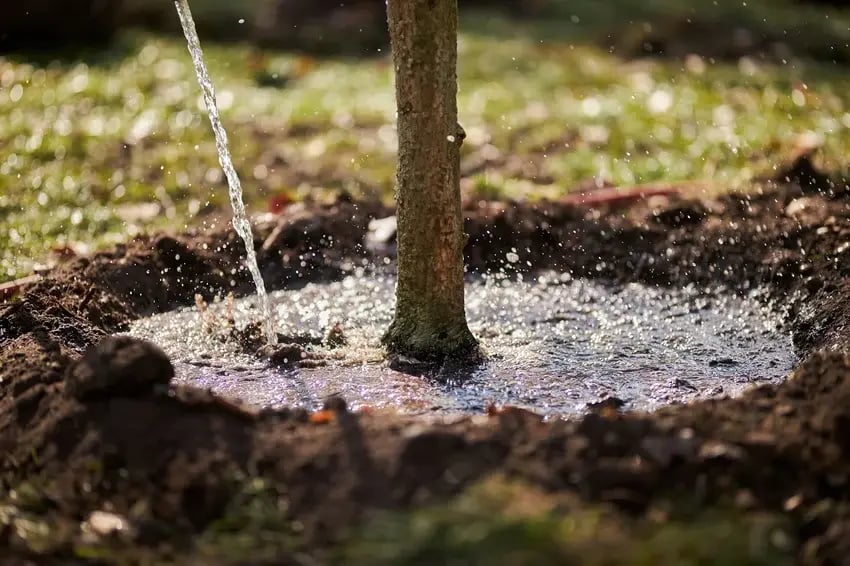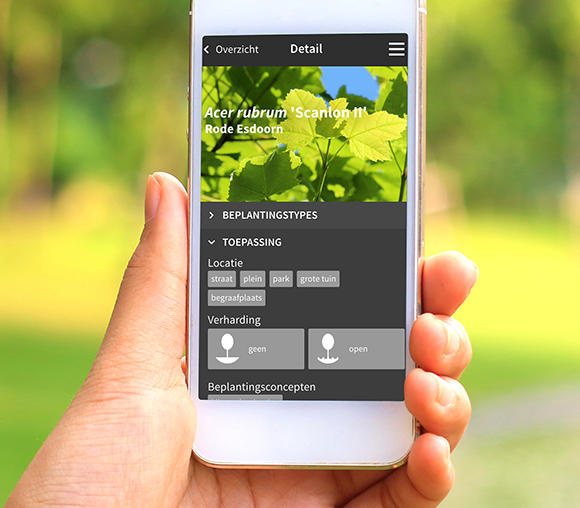Trees are thirsty!

Newly planted trees? Chances are they are thirsty!
Watering is the logical and necessary care of newly planted trees from the moment buds start budding on deciduous deciduous trees. Evergreen trees differ from this, of course. This is because trees lose part of their roots when they are dug up and are therefore unable to find water immediately when they are transplanted. Especially in the first two to three years after planting, watering is absolutely essential. Why this is so and how best to do it, we discuss in this blog.
When do you give extra water to the newly planted tree?
After planting a tree, regular watering is essential for rooting and growth, especially during dry and hot periods. In particular, the period from sprouting in spring until the longest day is crucial. During the first three growing seasons after planting, the tree needs extra water during dry periods, because the root system is not yet sufficiently developed to reach water on its own. Extra water is needed in any case when:
- the tree is in full leaf
- the tree gets a lot of sun/heat, e.g. by reflection from a facade
- the tree is standing in paving or in the grass
- the soil is poor in humus
- the moisture retention capacity of the soil is low
- there are large trees in the vicinity
- the tree catches a lot of wind
- it is an evergreen tree
- the groundwater level is low
Customization
Watering trees is a matter of customisation. Too little water can cause the tree to die, but too much water is also harmful because the roots are then deprived of oxygen (and can then rot). The amount and frequency of watering must be constantly adjusted to conditions. It is not enough to just look at the surface of the soil to determine whether it is dry and the tree needs water. A shower of rain can make the top layer appear moist, while the deeper layers are dried out. Or vice versa, during a short dry spell, the top layer may appear dried out, while the deeper layers contain sufficient moisture. You determine the actual moisture content at about 15 centimetres deep in the soil. If it is dry at that depth, water. Hanging leaves are also misleading in new plantings because this does not always mean that the tree is water-deficient: this may be the specific drought mechanism of certain species to evaporate less water. Alternatively, there may be enough water in the soil, but the tree cannot absorb it properly: it is then necessary to prune to rebalance the leaf area and tree roots.
But how much water should you give? The amount of water a tree needs depends on several factors, including trunk size and site factors that affect how much moisture evaporates and needs to be replenished, such as soil type, groundwater level, sunlight, shade, wind and paving. General quantities are therefore very difficult to give. As a guideline, the table below can be used for a dry week without rain.

How do you water the tree?
You can water trees in different ways. It is advisable to build a watering edge or an earthen dike around the root ball. This ensures that the water reaches the roots. The watering edge or dike should preferably be ten centimetres larger than the diameter of the root ball and stick out 15 to 30 centimetres above ground level. In some cases, a drain is used. In that case, water should not only be given via the drain, but also directly on the root ball, otherwise the top will dry out too much. Drip hoses and drippers are also increasingly used, especially if several trees are standing together. With these forms of watering, make sure the amounts are correct; visually it is much harder to estimate how much water is actually being given. Also, the holes of drip hoses tend to plug up, which only becomes visible when the tree gets drought stress. It is better to give a large amount of water once or twice a week than a little every day. Under extremely hot weather conditions, watering can be done more often, but at least with a dry interval of three days so that the soil can still dry out and roots will look for water themselves.
In summary, watering newly planted trees is essential for their survival and growth, especially during dry periods. It is important to create a watering border around the root ball and water directly on the root ball. However, watering trees is tailor-made and should be adapted to the specific conditions. By regularly checking the moisture condition of the soil and giving the right amount of water, you ensure that your trees take root, stay healthy and thrive. After three years, a tree has generally developed such a root system that it can take care of its own water supply and the watering edge should be removed. Should watering still be necessary once in a while, never water directly on the trunk but where the roots are, i.e. outside the watering edge.










